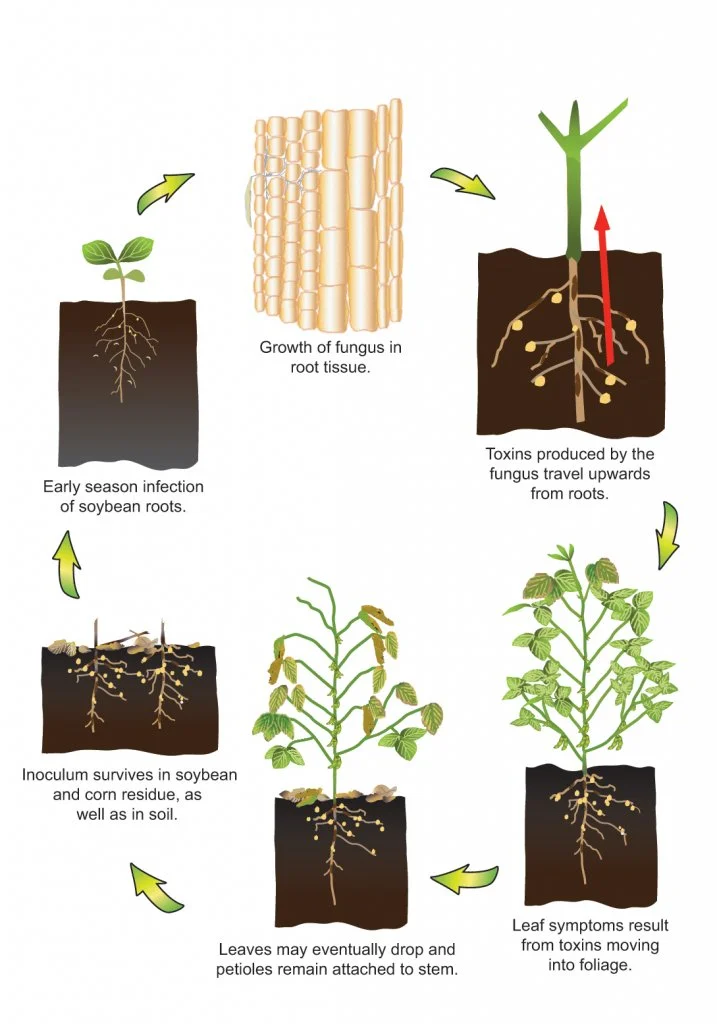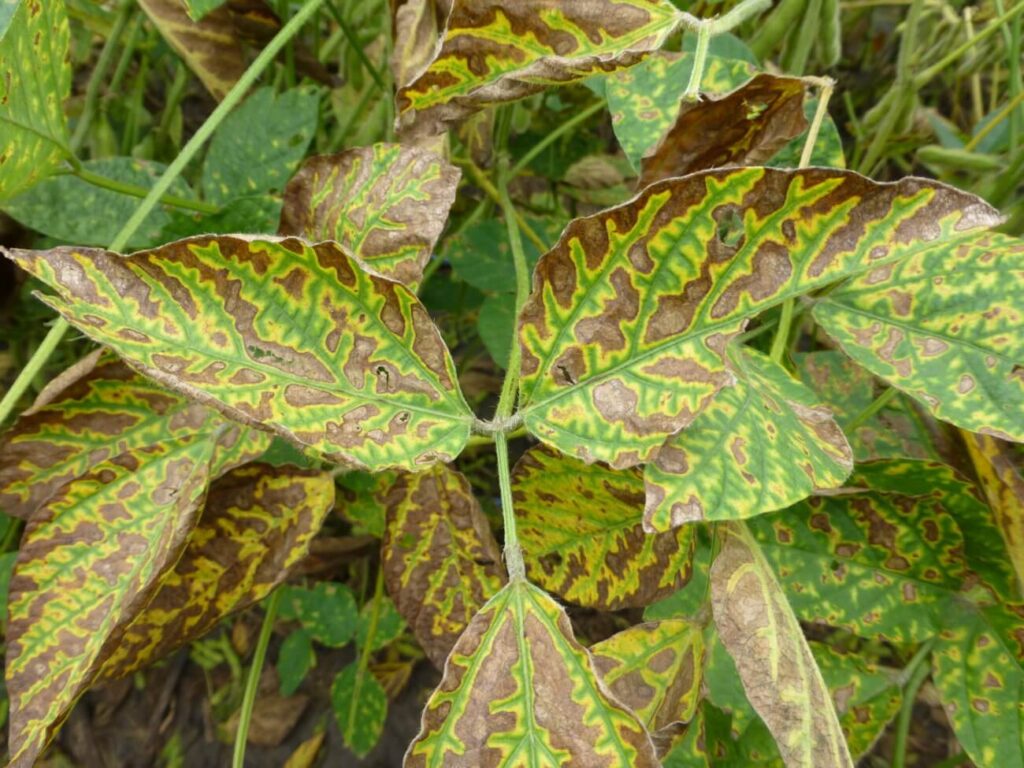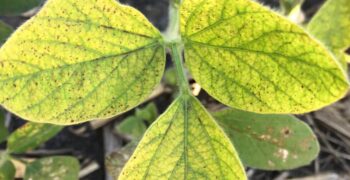Background:
Sudden death syndrome (SDS) is caused by the soilborne fungus Fusarium virguliforme. Foliar symptoms of SDS are results of a toxin that moves from the roots to the leaves. These symptoms will hardly appear before flowering. Leaves that are infected will begin to show scattered yellow spots between their veins. These spots will begin to grow to form large chlorotic and necrotic blotches between the veins while the midvein and major lateral veins remain green.
Leaflets eventually drop, unlike the petioles. The plants will have rotted taproots and lateral roots. When cutting the stems lengthwise, the woody tissue of the taproot will be discolored to light gray or brown. This discoloration can extend up to 2 inches above the ground. A way to distinguish the difference between SDS and brown stem rot (BSR) is the presence or absence of internal stem browning. The stems of SDS-infected plants have a white pith.
Life Cycle:
 The soilborne fungus survives on infested crop residue and soil for years. Crop rotation with corn is not effective as the fungus can increase with corn residue. Root infection in soybeans can happen within days of planting and favors high soil moisture. Large amounts of rainfall during the reproductive stages accelerates foliar symptom development. Soil compaction and infection by soybean cyst nematode (SCN) also increases the disease severity. (Crop Protection Network Sudden Death Syndrome)
The soilborne fungus survives on infested crop residue and soil for years. Crop rotation with corn is not effective as the fungus can increase with corn residue. Root infection in soybeans can happen within days of planting and favors high soil moisture. Large amounts of rainfall during the reproductive stages accelerates foliar symptom development. Soil compaction and infection by soybean cyst nematode (SCN) also increases the disease severity. (Crop Protection Network Sudden Death Syndrome)
Scouting:
To identify SDS, look for the foliar symptoms. Dig up the roots to examine them for root rot and split the stem.
Management:
- Plant non-susceptible hybrids.
- Plant earlier than planned in warm, dry soils.
- Use seed treatments containing adepidyn or fluopyram.
- Manage soil compaction.
- Harvest corn fields cleanly. (Soybean Research & Information Network Sudden Death Syndrome)



